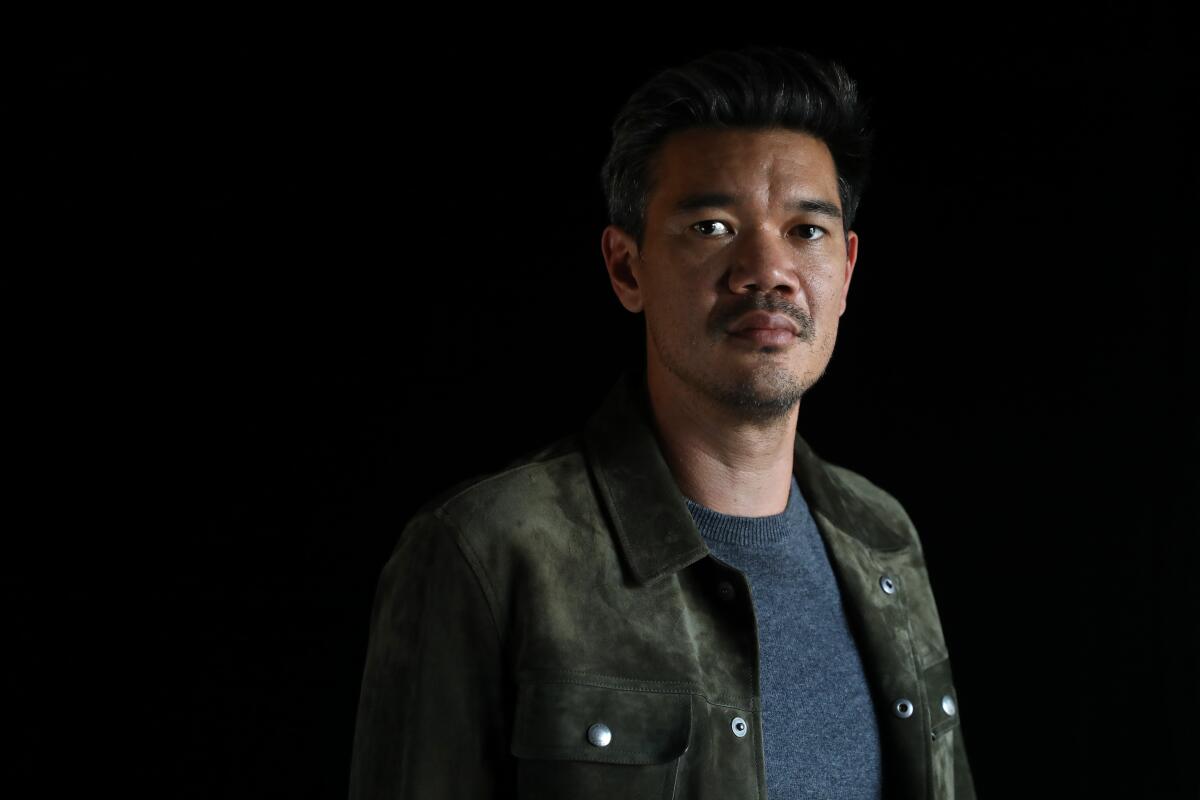His ‘Just Mercy’ leans on Jamie Foxx’s experience and Michael B. Jordan’s heart

- Share via
“In all the movies I’ve made so far, there’s been no special effects or action to lean on, so the performances are always the main thing,” says director Destin Daniel Cretton. “And of course, that all comes down to casting.”
Cretton knows a thing or two about the power of a well-cast ensemble. In 2013, he picked then-unknowns Brie Larson and Rami Malek for his debut feature, “Short Term 12,” effectively launching their Oscar-winning careers. Now Cretton has assembled another powerhouse troupe to dramatize the real-life death row rescue mission depicted in the Christmas release “Just Mercy.”
Set in 1992 Alabama, the courtroom drama stars Michael B. Jordan as lawyer Bryan Stevenson, with Jamie Foxx as his wrongly convicted client Walter“Johnny D.” McMillian, Larson as Equal Justice Initiative co-founder Eva Ansley and Tim Blake Nelson in the role of eccentric felon Ralph Myers.
“The characters just seemed very real to me,” says Cretton, who became captivated with the “Just Mercy” case shortly after producer Gil Netter handed him Stevenson’s memoir of the same name. “I sat in a coffee shop in Hollywood, started reading Bryan’s book and couldn’t put it down,” Cretton recalls, speaking from a West Hollywood hotel. “The humanity of this story moved me to tears.”
Michael B. Jordan produced and stars in the biopic “Just Mercy,” which had its world premiere at the Toronto Film Festival to great acclaim.
Cretton and co-writer Andrew Lanham pictured Jordan in the lead role even before they started on the script. Why Jordan? “With every one of Michael B.’s characters going back to ‘Fruitvale,’ you really feel his heart,” Cretton says. “Everybody loves his Killmonger in ‘Black Panther,’ even though he’s the villain, because you can still feel his heart, and that’s what ‘Just Mercy’ is all about. It’s about this lawyer who has a real love for the people he’s fighting for.”
Jordan and Cretton met with Stevenson at his home in Montgomery, Ala., where the civil rights attorney recommended a restrained performance no matter how infuriating the circumstances. “Bryan said it would be strategically stupid to tell off the sheriff and the D.A. or to call out somebody in the courtroom,” Cretton recalls. “He told us, ‘You will never yell at a judge or white lawyer in the South and end up getting what you want.’ So Michael B. found these moments in the film where we can see he clearly wants to explode and let those emotions out, but he struggles to keep it in.”
Cretton enlisted Oscar-winner Foxx to play “Johnny D.” “Growing up in Texas,” the director notes, “Jamie had experiences that gave him a personal connection. I don’t want to say it was easy, but I think it was natural for Jamie to tap into that character.”
Character actor Tim Blake Nelson finds the spotlight as a lying convict driven by childhood trauma in ‘Just Mercy.’
Nelson took on the role of “Just Mercy” wild card Myers, the twitchy inmate pressured by authorities into giving false testimony against Johnny D. “Ralph has a sort of bizarre charisma, and he could have easily become a caricature, but Tim wanted to find the human behind the shtick,” says Cretton, noting that, as a child, Myers had been disfigured in a fire.
“Tim worked really hard on getting the deformed lip in place, which he did completely on his own throughout the movie. Tim understood how his character highlights a common occurrence, where people in power take poor white people and pit them against poor black people. The truth is, they’re all being exploited.”
Actor Rob Morgan, portraying Johnny D.’s death row compatriot Herbert Richardson, anchors one of the movie’s most wrenching sequences. Centered on a replica of Holman Correctional Facility’s so-called Yellow Mama electric chair, the scene was staged with help from a former executioner.
“He walked us through the specifics of the execution process step by step, and we rehearsed the actors playing the guards so they had their routine down,” Cretton explains. “But we purposely waited to roll camera until the first time Rob Morgan sees the execution chamber, and the first time he sits in the chair, and the first time he gets the straps put on him. What you see on the screen is our actor experiencing all of that for the first time.”
Although the “Just Mercy” story ends in 1993, Stevenson and the Equal Justice Initiative continue to combat systemic racism. “It’s a good time for a movie like this to be coming out,” Cretton says. “Bryan does not beat people by arguing them into submission. He’s kind of an empathy genius who disarms the walls we put up by reminding us that we all want to live in a world that is fair and just.”
More to Read
Only good movies
Get the Indie Focus newsletter, Mark Olsen's weekly guide to the world of cinema.
You may occasionally receive promotional content from the Los Angeles Times.












